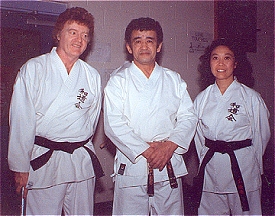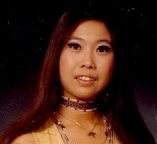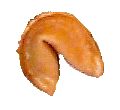 People
born in the year of the RAT are blessed with great personal charm. The
Rat is adaptable, aggressive, and creative. Rat people are hard working,
thrifty, and can save a lot of money. They are elegant by nature and strive
for the better things in life. Bright and gregarious, rat's intellectual
versatility is not always immediately recognized. Rat people make good
business people, accountants, and bankers. People
born in the year of the RAT are blessed with great personal charm. The
Rat is adaptable, aggressive, and creative. Rat people are hard working,
thrifty, and can save a lot of money. They are elegant by nature and strive
for the better things in life. Bright and gregarious, rat's intellectual
versatility is not always immediately recognized. Rat people make good
business people, accountants, and bankers.
Ideal Partner: Dragon and
Monkey
Rat Years: 1912, 1924, 1936, 1948,
1960, 1972, 1984, 1996, 2008
The
OX is quiet, steadfast, methodical and can tolerate difficulties. Ox people
are hard working and down to earth. They are exceptionally clever and creative
with their hands. In business, the ox often brings prosperity, not through
entrepreneurial imagination and risk, but as a result of logical thought,
resolute practicality, and honest endurance. Ox people should seek their
fortune as a surgeon, dentist, architect, tailor, or technician.
Ideal Partner: Rat, Rooster,
or Snake
Ox years: 1913, 1925, 1937, 1949,
1961, 1973, 1985, 1997, 2009
The TIGER is a born leader, fiercely competitive,
and never afraid to fight. Tigers often get into difficult and hazardous
situations because they live dangerously. Narrow-mindedness and suspiciousness
are their greatest faults. Their careers exemplifies them as deep thinkers
and careful planners. Tigers are likely to succeed in sales, personnel
management. They can be a good military leader, supervisors, teachers,
firemen, or police officers.
Ideal Partner: Horse, Dragon,
or Dog
Tiger Years: 1914, 1926, 1938,
1950, 1962, 1974, 1986, 1998, 2010
RABBIT people are happy, gifted,
refined and ambitious. They also know how to draw others' attention and
are great mixers in any social gatherings. The typical Rabbit will be submissive,
even humble, in a constant effort to avoid confrontations. Rabbit is an
excellent judge of character, with an instinct for recognizing sincerity
in others and an almost uncanny ability for sensing falsehood. Hare people
make wonderful receptionists, publicists, stockbrokers, and pharmacists.
Ideal Partner: Ram, Dog, Boar
Rabbit years: 1915, 1927, 1939,
1951, 1963, 1975, 1987, 1999, 2011
The DRAGON symbolizes life, growth, and
brings blessings of longevity, virtue and harmony. Dragon people are born
extroverts, their opinions and ideas are worth listening to since their
advice is usually the best. Elegant and with a good eye for spotting the
latest trends, Dragon people are always to the forefront of the fashion
scene. Blessed with rich imagination, the Dragon always comes up with exotic
ideas for new ventures. a Dragon should choose a career as artist, doctor,
or architect.
Ideal Partner: Rat, Monkey,
Rooster
Dragon years: 1916, 1928, 1940,
1952, 1964, 1976, 1988, 2000, 2012
Those born under the sign of the SNAKE
are romantic, passionate, charming and well informed. Snakes are intellectuals,
philosophers, and deep thinkers. They strive to succeed in all that they
do. The are extremely self-critical. Snake personalities often make their
way to the top. They ensure that they are in the right place at the right
time, which means when the right people are there as well. Snake people
should seek their fortunes as professors, writers, philosophers,
or psychiatrists.
Ideal Partner: Dragon, Dog
Snake years: 1917, 1929, 1941,
1953, 1965, 1977, 1989, 2001, 2013
HORSE year people are popular and hard
workers. They have financially sound minds and are adept at handling money
matters. Whether male or female, Horse personalities feel more comfortable
in the company of their own kind. They are independent and self-willed
individuals who never take advice. Horse people should choose a field as
a dentist, financier, banker, or politician.
Ideal Partner: Tiger, Ram
Horse years: 1906, 1918, 1930,
1942, 1954, 1966, 1978, 1990, 2002
RAM
people are elegant, charming, generous, wise and gentle. They are also
pessimists, hesitant, and over-anxious worriers. Uncertainty causes the
Ram people to seek guidance from others while their timidity prevents them
from becoming great leaders. They are deeply religious and highly talented
in the fields of art and music. Ram people should be good in the professions
of gardening, actor, artist, entertainer, musician, or photography.
Ideal Partner: Boar, Horse
Ram Years: 1907, 1919, 1931, 1943,
1955, 1967, 1979, 1991, 2003
The MONKEYS are mischievous, vain, and
clever. Their most prized traits are originality, creativity, and education.
People adore Monkeys for their wit, high intelligence, and interest in
world affairs. Older and wiser Monkeys are able to channel their energetic
and rich imaginations into the solving of complex problems. Monkeys people
can succeed in professions such as business, trade, law, stocks, industry
and politics.
Ideal Partner: Dragon, Rat
Monkey Years: 1908, 1920, 1932,
1944, 1956, 1968, 1980, 1992, 2004
The ROOSTERS people are industrious, diligent,
and devoted to work. They love to travel because of their courageous and
adventurous spirit. They are deep thinkers, but can often be eccentric.
They are not at all shy and prone to exaggerate and boast on all matters.
Rooster people make good travel and public relation agents, dentists surgeons,
cooks, or beauticians.
Ideal Partner: Ox, Snake
Rooster Years: 1909, 1921, 1933,
1945, 1957, 1969, 1981, 1993, 2005
People born in the year of the DOG are
honest, loyal, and have a deep sense of duty. Their intelligence and industrious
nature make them good leaders in the business world. The Dog people are
usually steady workers, they can easily become both trusted and valued
members of any community. Those people born in Dog years would make a superior
industry leader, priest, educator, doctor, writer, or scientist.
Ideal Partner: Horse, Tiger
Dog Years: 1910, 1922, 1934, 1946,
1958, 1970, 1982, 1994, 2006
By nature, BOARS are peace-loving, trustful,
honest, and sincers. People born in the year of the Boar will be lucky
and successful in handling money, business and academic matters. They have
a deep desire for knowledge and are generally well informed. Boars are
the finishers, they are the ones who put the last necessary touches to
a project. Boars are suited to be doctors, bankers, businessmen, scientists
and entertainers.
Ideal Partner: Rabbit, Ram
Boar Years: 1911, 1923, 1935, 1947,
1959, 1971, 1983, 1995, 2007
|
 .
.  .
.









 Chinese
New Year is the longest and most important celebration in the Chinese calendar.
Chinese months are reckoned by the lunar calendar, with each month beginning
on the darkest day. New Year festivities traditionally start on the first
day of the month and continue until the fifteenth, when the moon is brightest.
In China, people may take weeks of holiday from work to prepare for and
celebrate the New Year.
Chinese
New Year is the longest and most important celebration in the Chinese calendar.
Chinese months are reckoned by the lunar calendar, with each month beginning
on the darkest day. New Year festivities traditionally start on the first
day of the month and continue until the fifteenth, when the moon is brightest.
In China, people may take weeks of holiday from work to prepare for and
celebrate the New Year.





 People
born in the year of the RAT are blessed with great personal charm. The
Rat is adaptable, aggressive, and creative. Rat people are hard working,
thrifty, and can save a lot of money. They are elegant by nature and strive
for the better things in life. Bright and gregarious, rat's intellectual
versatility is not always immediately recognized. Rat people make good
business people, accountants, and bankers.
People
born in the year of the RAT are blessed with great personal charm. The
Rat is adaptable, aggressive, and creative. Rat people are hard working,
thrifty, and can save a lot of money. They are elegant by nature and strive
for the better things in life. Bright and gregarious, rat's intellectual
versatility is not always immediately recognized. Rat people make good
business people, accountants, and bankers.
 Chinese
New Year (Nian) lasts two or three days,
but the New Year season extends from the middle of the previous year's
12th month to the middle of the 1st month of the new year. It is a holiday
celebrated by Chinese the world over.
Chinese
New Year (Nian) lasts two or three days,
but the New Year season extends from the middle of the previous year's
12th month to the middle of the 1st month of the new year. It is a holiday
celebrated by Chinese the world over.


















